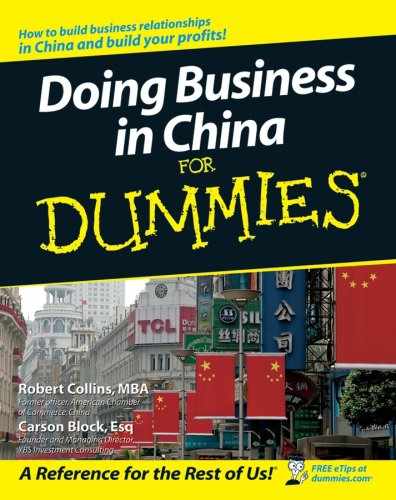Placing Orders
This section discusses the ordering process, which is fairly standard. As you and the supplier get to know each other better, you’ll be able to get some more favorable terms.
Putting down a deposit
The standard deposit for a new relationship in China sourcing is 30 percent. As a supplier gets to know you better, they may reduce the deposit. In most cases, you shouldn’t have to pay the deposit until you’ve approved the samples; however, if producing the samples is really expensive, you can deal with the upfront costs in a couple of ways:
| ✓ | Sign a purchase agreement stating that you’ll purchase a minimum amount of product if you approve the samples. |
| ✓ | Pay for tooling costs (if they’re expensive) but have these costs offset against your first order. |
When you put down your deposit, always be ready to lose it and walk away. Losing your deposit doesn’t happen often, but you shouldn’t be shocked if it does. If the deposit’s large enough, you can pursue legal action — particularly if your contract has an arbitration clause (see Chapter 17); however, a few thousand dollars may not be worth pursuing.

Purchasing goods via free on board arrangements
The most common way of purchasing goods is free on board (FOB). FOB [origin port name] means that the seller must deliver the goods on board a ship (or airplane) at the port of origin. If you buy FOB, the factory delivers to a freight forwarder that you choose (see the next section).
You can negotiate to have your suppliers handle freight forwarding arrangements; however, we don’t recommend it. Many suppliers will look for the lowest cost, which may lead them to use a fly-by-night forwarder.

Some goods, particularly electronics and chemicals, must be inspected and certified at the origin port, a process that usually takes a day. With FOB, the supplier usually covers all locally imposed fees and charges, including inspection charges. Even though covering these expenses is customary for suppliers, make sure you get that in your agreements!
Suppliers usually want to be paid in full before they load the container (in a new relationship) or upon delivery to the port. You can try to negotiate this point, though. From your standpoint, paying only after you receive and inspect the products is best. A more realistic compromise in a new relationship may be to pay when you can see the bill of lading. The bill of lading formally indicates that that the carrier has received the goods.
Pay for the balance of your product through a letter of credit (LC) if the seller agrees. Chapter 10 discusses LCs, which provide additional protection in case of a problem with the product or delivery.

